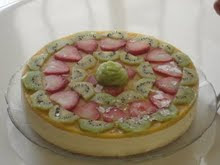
Scientists have uncovered the therapeutic properties of karela (bitter melon), that make it a powerful treatment for Type 2 diabetes.
Teams from the Garvan Institute of Medical Research and the Shanghai Institute of Materia Medica pulped roughly a ton of fresh bitter melon and extracted four very promising bioactive components. These four compounds all appear to activate the enzyme AMPK, a protein well known for regulating fuel metabolism and enabling glucose uptake.
"We can now understand at a molecular level why bitter melon works as a treatment for diabetes," said Professor David James, Director of the Diabetes and Obesity Program at Garvan. "By isolating the compounds we believe to be therapeutic, we can investigate how they work together in our cells."
People with Type 2 diabetes have an impaired ability to convert the sugar in their blood into energy in their muscles. This is partly because they don't produce enough insulin, and partly because their fat and muscle cells don't use insulin effectively, a phenomenon known as 'insulin resistance'.
Exercise activates AMPK in muscle, which in turn mediates the movement of glucose transporters to the cell surface, a very important step in the uptake of glucose from the circulation into tissues in the body. This is a major reason that exercise is recommended as part of the normal treatment program for someone with Type 2 diabetes. The four compounds isolated in bitter melon perform a very similar action to that of exercise, in that they activate AMPK.
Garvan scientists involved in the project, Drs. Jiming Ye and Nigel Turner, both stress that while there are well known diabetes drugs on the market that also activate AMPK, they can have side effects.
"The advantage of bitter melon is that there are no known side effects," said Dr Ye. "Practitioners of Chinese medicine have used it for hundreds of years to good effect."
Garvan has a formal collaborative arrangement with the Shanghai Institute of Materia Medica. In addition to continuing to work together on the therapeutic potential of bitter melon, we will be exploring other Chinese medicines.
Professor Yang Ye, from the Shanghai Institute and a specialist in natural products chemistry, isolated the different fractions from bitter melon and identified the compounds of interest.
"Bitter melon was described as "bitter in taste, non-toxic, expelling evil heat, relieving fatigue and illuminating" in the famous Compendium of Materia Medica by Li Shizhen (1518-1593), one of the greatest physicians, pharmacologists and naturalists in China's history," said Professor Ye. "It is interesting, now that we have the technology, to analyze why it has been so effective."
"Some of the compounds we have identified are completely novel. We have elucidated the molecular structures of these compounds and will be working with our colleagues at Garvan to decipher their actions at a molecular level. We assume it's working through a novel pathway inside cells, and finding that pathway is going to be very interesting."











No comments:
Post a Comment